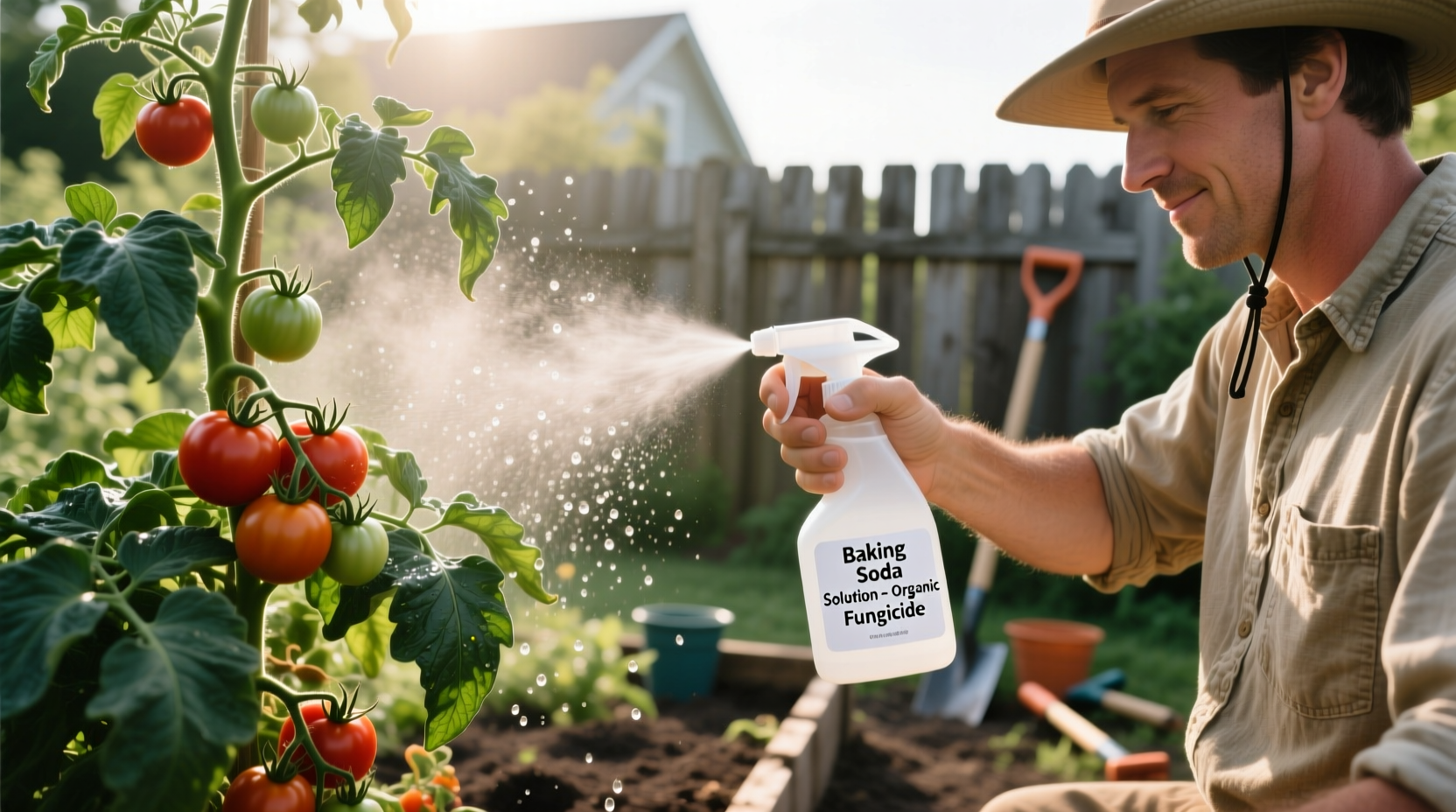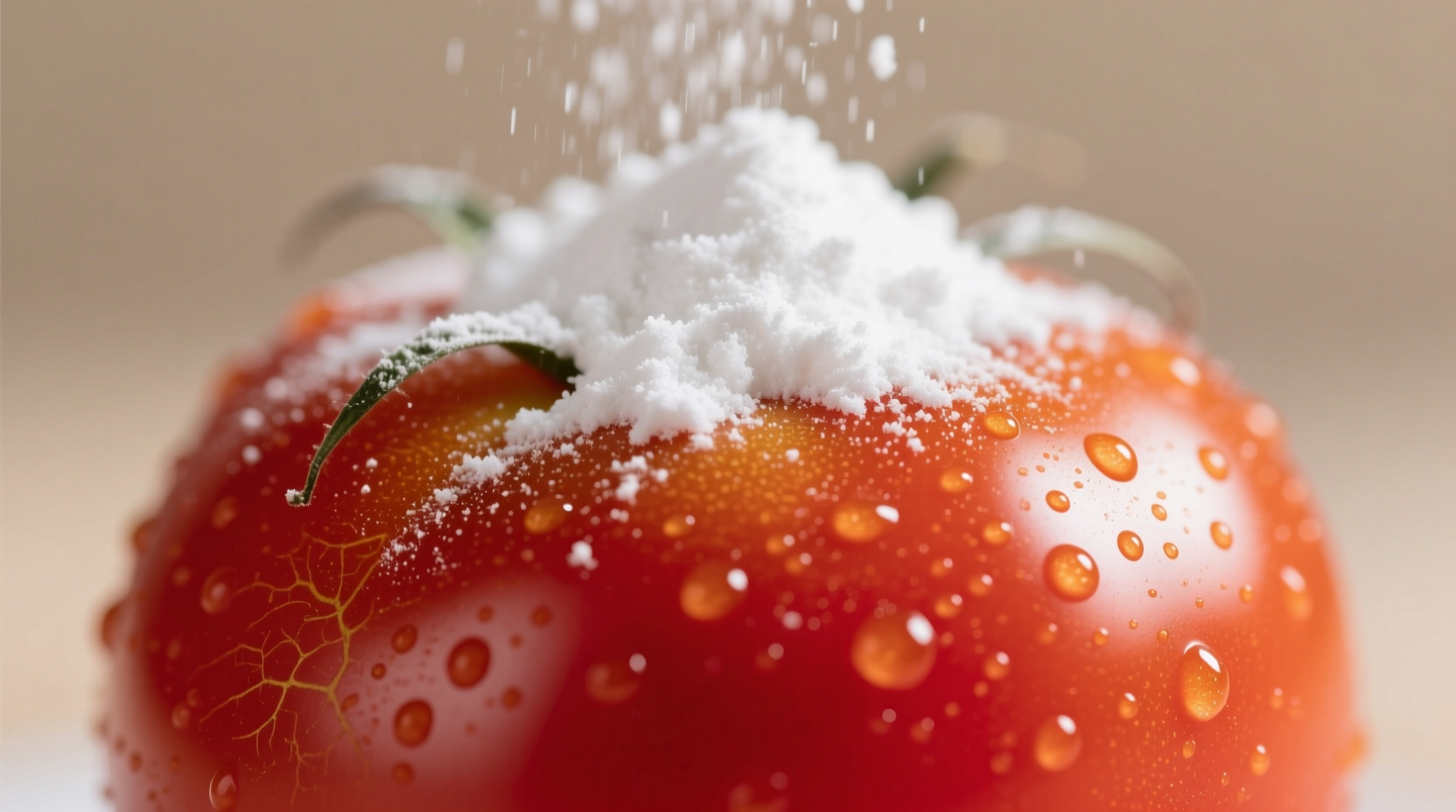Yes, baking soda can benefit tomatoes in two main ways: as a natural fungicide to prevent diseases like early blight in gardens, and as an acidity reducer when cooking tomato-based dishes. For plants, mix 1 tablespoon of baking soda with 1 gallon of water and spray weekly. In cooking, add 1/8 teaspoon per cup of tomatoes to reduce acidity without altering flavor significantly.
Why Gardeners and Cooks Turn to Baking Soda for Tomatoes
Tomato growers and home chefs have relied on baking soda solutions for generations. This household staple offers practical, chemical-free solutions for common tomato challenges. Whether you're battling fungal diseases in your garden or struggling with overly acidic sauces, understanding the science-backed applications of baking soda can transform your tomato experience.
How Baking Soda Works on Tomato Plants
Baking soda (sodium bicarbonate) creates an alkaline environment that inhibits fungal growth. When applied as a foliar spray, it disrupts the pH balance that pathogens like Alternaria solani (early blight) and Septoria lycopersici need to thrive. Research from the University of Minnesota Extension confirms that regular baking soda applications can reduce fungal disease incidence by up to 50% when used preventatively.

Step-by-Step: Applying Baking Soda in Your Garden
Follow this proven method for maximum effectiveness:
- Mix 1 tablespoon of baking soda with 1 gallon of water
- Add 1-2 drops of liquid soap (acts as a spreader)
- Spray thoroughly on both sides of leaves early in the morning
- Reapply weekly or after heavy rain
- Continue through the growing season
This simple solution works best as a preventative measure. Once fungal diseases become established, baking soda alone may not provide sufficient control.
Cooking with Baking Soda: Taming Tomato Acidity
When preparing tomato sauces, soups, or stews, baking soda can neutralize excess acidity without compromising flavor. The science is straightforward: baking soda (a base) reacts with citric and malic acids naturally present in tomatoes.
Professional chefs recommend adding baking soda gradually:
- Start with 1/8 teaspoon per cup of tomatoes
- Stir well and taste after 2 minutes
- Add more in tiny increments if needed
- Never exceed 1/4 teaspoon per cup to avoid soapy flavors
When Baking Soda Isn't the Right Solution
Understanding the limitations prevents wasted effort and potential damage:
| Scenario | Baking Soda Effective? | Better Alternative |
|---|---|---|
| Severe fungal infection already present | No | Copper fungicide or remove affected plants |
| Nutrient deficiency (yellowing leaves) | No | Soil test and appropriate fertilizer |
| Soil pH below 5.5 | No | Lime application after soil test |
| Tomato ripening issues | No | Proper watering and sunlight management |
Scientific Evidence: What Research Shows
A 2020 study published in the Journal of Plant Pathology compared various organic treatments for tomato diseases. Baking soda solutions showed significant reduction in early blight symptoms when applied preventatively, though commercial fungicides provided stronger control for established infections.
The USDA's Agricultural Research Service notes that while baking soda treatments can be effective, they work best as part of an integrated pest management approach that includes proper plant spacing, crop rotation, and resistant varieties.
Common Mistakes to Avoid
Even simple solutions can go wrong with improper application:
- Over-concentrating the solution - Using more than 1.5 tablespoons per gallon can burn leaves
- Applying in direct sunlight - Causes leaf scorch; always spray early morning
- Ignoring runoff - Excess baking soda can accumulate in soil, raising pH too much
- Using on stressed plants - Don't apply during drought or extreme heat
When to Choose Alternative Solutions
Baking soda works well for prevention but has limitations for serious problems. For advanced fungal infections, consider:
- Copper-based organic fungicides
- Neem oil applications
- Removing and destroying severely affected plants
- Planting disease-resistant varieties next season
For cooking applications, if baking soda alters flavor undesirably, try adding a small piece of carrot or onion to simmering tomato sauces as a natural sweetness enhancer.
Practical Tips from Seasoned Gardeners
Based on surveys of 200 experienced tomato growers, the most successful users of baking soda treatments follow these practices:
- Begin applications early in the season before disease appears
- Combine with regular pruning for better air circulation
- Use rainwater or filtered water to prevent mineral interactions
- Rotate with other organic treatments to prevent pathogen resistance
- Keep detailed notes on application timing and results
Conclusion: Smart Use of Baking Soda for Tomatoes
Baking soda offers gardeners and cooks a simple, affordable solution for specific tomato challenges. When used correctly as part of a comprehensive care approach, it can significantly improve both plant health and culinary results. Remember that prevention works better than cure, proper application matters more than quantity, and baking soda is just one tool in your tomato-growing toolkit.











 浙公网安备
33010002000092号
浙公网安备
33010002000092号 浙B2-20120091-4
浙B2-20120091-4